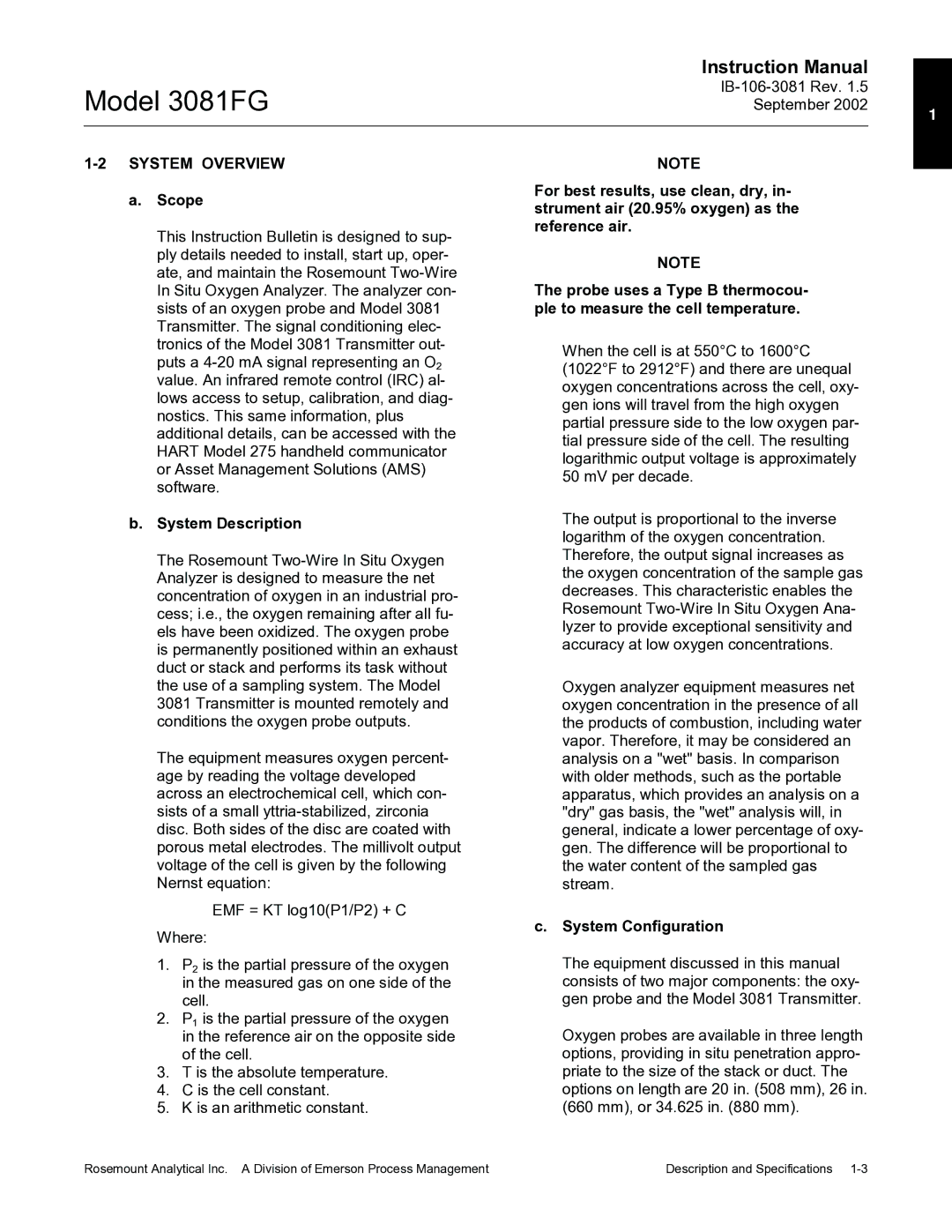
Model 3081FG
Instruction Manual
September 2002
1
1-2 SYSTEM OVERVIEW
a.Scope
This Instruction Bulletin is designed to sup- ply details needed to install, start up, oper- ate, and maintain the Rosemount
b.System Description
The Rosemount
The equipment measures oxygen percent- age by reading the voltage developed across an electrochemical cell, which con- sists of a small
EMF = KT log10(P1/P2) + C
Where:
NOTE
For best results, use clean, dry, in- strument air (20.95% oxygen) as the reference air.
NOTE
The probe uses a Type B thermocou- ple to measure the cell temperature.
When the cell is at 550°C to 1600°C (1022°F to 2912°F) and there are unequal oxygen concentrations across the cell, oxy- gen ions will travel from the high oxygen partial pressure side to the low oxygen par- tial pressure side of the cell. The resulting logarithmic output voltage is approximately 50 mV per decade.
The output is proportional to the inverse logarithm of the oxygen concentration. Therefore, the output signal increases as the oxygen concentration of the sample gas decreases. This characteristic enables the Rosemount
Oxygen analyzer equipment measures net oxygen concentration in the presence of all the products of combustion, including water vapor. Therefore, it may be considered an analysis on a "wet" basis. In comparison with older methods, such as the portable apparatus, which provides an analysis on a "dry" gas basis, the "wet" analysis will, in general, indicate a lower percentage of oxy- gen. The difference will be proportional to the water content of the sampled gas stream.
c. System Configuration
1.P2 is the partial pressure of the oxygen in the measured gas on one side of the cell.
2.P1 is the partial pressure of the oxygen in the reference air on the opposite side of the cell.
3.T is the absolute temperature.
4.C is the cell constant.
5.K is an arithmetic constant.
The equipment discussed in this manual consists of two major components: the oxy- gen probe and the Model 3081 Transmitter.
Oxygen probes are available in three length options, providing in situ penetration appro- priate to the size of the stack or duct. The options on length are 20 in. (508 mm), 26 in. (660 mm), or 34.625 in. (880 mm).
Rosemount Analytical Inc. A Division of Emerson Process Management | Description and Specifications |
